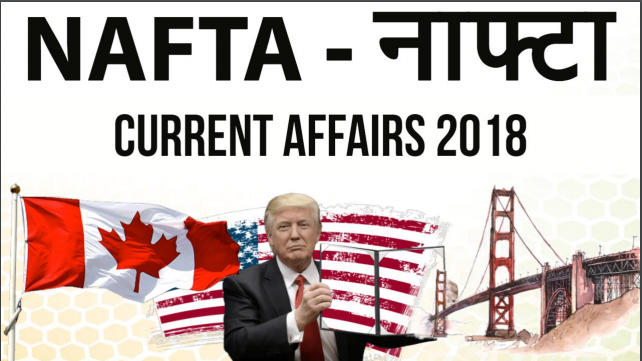Table of Contents
NAFTA
•The North American Free Trade Agreement
•The agreement is between Canada, the United States, and Mexico.
WHAT IS ITS HISTORY?
The impetus for NAFTA began with President Ronald Reagan, who proposed a North American common market in his campaign.
In 1984, Congress passed the Trade and Tariff Act. That gave the president “fast-track” authority to negotiate free trade agreements.
NOTES
Regan’s successor, President H.W. Bush, began negotiations with Mexican President Salinas for a liberalized trade agreement between the two countries. Before NAFTA, Mexican tariffs on U.S.
imports were 250 percent higher than U.S. tariffs on Mexican imports.
WHAT IS ITS PURPOSE?
Article 102 of the NAFTA agreement outlines its purpose. There are seven
specific goals.
1. Grant the signatories most favoured nation status.
2. Eliminate barriers to trade and facilitate the cross-border movement of
goods and services.
3. Promote conditions of fair competition.
4. Increase investment opportunities.
5. Provide protection and enforcement of intellectual property rights.
6. Create procedures for the resolution of trade disputes.
7. Establish a framework for further trilateral, regional, and multilateral
cooperation to expand the trade agreement’s benefits. (Source: “FAQ,”
NAFTA Secretariat.)
MAASTRICHT TREATY
• The Treaty on European Union –
• In 1993 the European Union (EU) created a “single market”— one territory without any internal borders or other regulatory obstacles to the free movement of goods and services. This
allowed every country and business in the EU to have access to more than 500 million consumers.
HAS IT FULFILLED ITS PURPOSE?
• NAFTA fulfilled all seven of its goals. That’s made it the world’s largest free trade area in terms of gross domestic product.
• Most important, it increased the competitiveness of the three countries in the global marketplace. This has become critical since the launch of the European Union.
THE 2016 PRESIDENTIAL CAMPAIGN
• Donald Trump promised to renegotiate NAFTA to get a better deal for U.S. workers.
• He wants Mexico to eliminate the VAT tax on U.S. exports to Mexico. He also wants Mexico to end its maquiladora program.
NOTES
President Donald Trump has pledged to begin renegotiating the North American Free Trade Agreement (NAFTA) in upcoming talks with the leaders of Mexico and Canada. Trump has called
NAFTA the “worst trade deal in history,” and blames it for the loss of manufacturing jobs in America’s Rust Belt.
He has pledged to negotiate “tough and fair” trade agreements with the goal of creating more U.S. jobs as a top goal.
IF TRUMP PULLS OUT OF NAFTA?
• Goldman Sachs projects a six-cent drop in the Canadian dollar if Trump announces a pullout, and a more dramatic effect on the peso.
• After the United States exits the pact, the tariffs, or taxes, that Canada and Mexico put on its goods would rise. For some goods, tariffs could go as high as 150 percent. That would cause
prices to spike and cut into company profits.
WHY IS NAFTA CONTROVERSIAL?
NAFTA was controversial when first proposed, mostly because it was the first [free trade agreement] involving two wealthy, developed countries and a developing country. Some people felt that allowing free trade with a developing country provides an incentive for U.Sbased
business to move their operations to that country.
Since its implementation NAFTA has remained a prime target of trade protectionists (those who advocate taking measures such as taxing imports to “protect” domestic industries from foreign
competition).





















 WhatsApp
WhatsApp